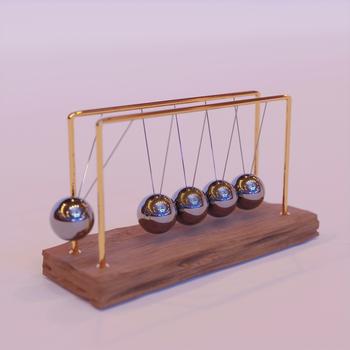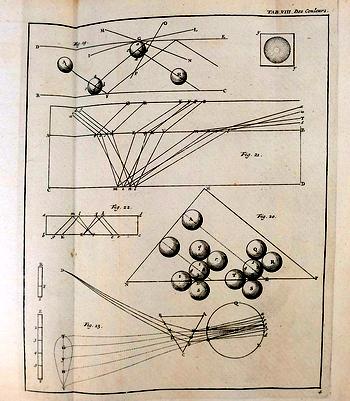Who First Invented Newton's Cradle
Kinetic Balls

(CC0) Newton's Cradle Kinetic Balls by Sunder Muthukumaran
Authenticated Inventor and Creator of the Newton's Cradle / Kinetic Balls
Briefly, in 1965 the 6th grade student Joe Smitherman created the 'kinetic balls' device for his Ridgecrest Elementary school science fair, of which he won first place. Joe's kinetic balls also later won the Texas Panhandle Science Fair. As a Boy Scout, Joe died on September 10th, 1966 due to injuries from a fall in Camp Don Harrington, located about 15 miles southeast of Amarillo, Texas. The proofs of Joe Smitherman's kinetic balls are supported by living eyewitnesses, photographs, and documented evidence within Texas State government agencies.
Academic Version
An academic paper titled "Newton's Cradle - An Example of Three Levels of Explanation" is available online at https:// user-web. icecube.wisc.edu/ ~shiu/ PHY248_S07/ newtonscradle explanation. pdf (spaces were added to the URL for the purpose of enabling word wrap). The PDF's URL is linked to the IceCube Neutrino Observatory under the University of Wisconsin–Madison domain. The PDF does not include an author's name nor date. The following is quoted from the academic paper.
"...Newton's was invented in 1967 by English actor Simon Prebble. ... also found a reference to Abbé Mariotte in the 17th century."
The Wisconsin–Madison University academic paper is verifiably false.
Wikipedia Version

(PD) Edme Mariotte's Ceuvres de M. Mariotte
From Wikipedia at https://en.wikipedia.org/wiki/Edme_Mariotte : "Newton's cradle - Marriote [sic] invented what is today known as Newton's cradle to demonstrate Newton's first law and the collision of suspended bodies of equal mass with the motion of the moving body being transferred to the one at rest. Newton acknowledged Mariotte's work, among that of others, in his Principia."
If Wikipedia's claim "Marriote invented what is today known as Newton's cradle" is true, then where is the evidence? Without evidence, Wikipedia's claim is false. Where is there a painting, a drawing, or a photograph of Mariotte's "Newton's cradle"? All self-thinking people learned of kinetics as infants, and all self-thinking two-year-old children could devise a 'Newton's cradle' (or draw a similar drawing as Edme Mariotte's) if the need were to arise, but who was the first to actually assemble a gadget that resembles "what is today known as Newton's cradle"?
A drawing of conceptual spheres (a la billiard balls) that correspond to natural physics does not infer that Mariotte actually assembled the toy that today is known as Newton's cradle.
All known information on Wikipedia is based upon hearsay and invention. Wikipedia cannot so much as accurately quote the elementary formula for ohm's law. Predominately, Wikipedia is merely the accumulation of opinions copy-pasted-paraphrased from websites of which had also copy-pasted-paraphrased information from other websites. There is no reason to assume that any Wikipedia information on historical and technical topics might be accurate.
Historical Writings
The small article Joe's Kinetic Balls gives brief portions of an original article which was written in 2003. Contact us if you would like to see the full original article.
There is also additional information about the kinetic balls (Newton's cradle) that has likely never been made public. Without the additional information, all claims formed upon publicly-available information are false.
Sum
The information about Joe Smitherman has been publicly available for almost sixty years, and my own articles have been publicly available for about twenty years, but academicians and the general public deny that firsthand experiences, firsthand observations, 1,000+ eyewitnesses, photographs, and government documents are evidence of whom first built the kinetic balls aka Newton's cradle.